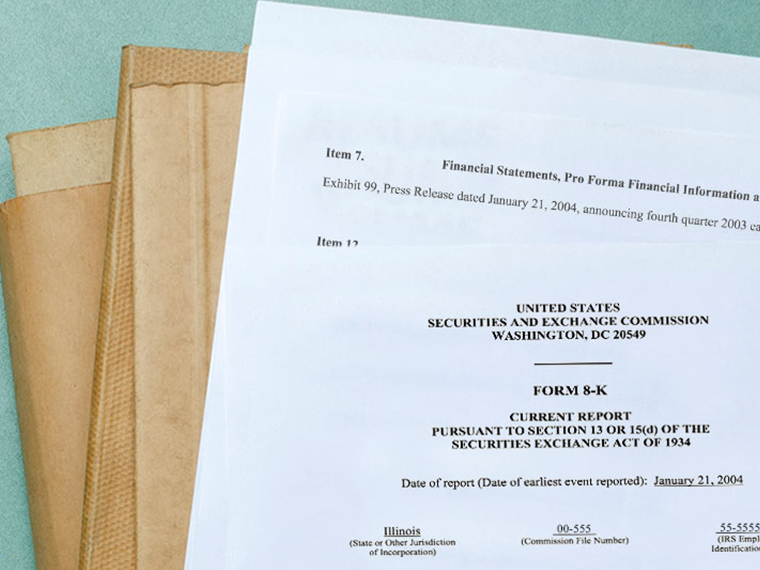Practitioners often ignore decades of progress in understanding what works
The population is tilting ever-older: In 2040, the U.S. Census bureau forecasts, there will be more Americans age 65 and older (80.8 million) than children under the age of 18 (77.1 million).
The trend increases the stakes for anyone in the business of persuading older Americans toward a given behavior — be it a marketing campaign or public policy initiative.
That work increasingly requires a nuanced approach. Decades of academic research has established that older people don’t respond to standard nudges and pitches in the same way their kids and grandkids do.
Opt In to the Review Monthly Email Update.
In a review of research in Current Directions in Psychological Science, Stanford’s Laura Carstensen and UCLA Anderson’s Hal Hershfield run through how current communication efforts often fail to connect with the materially different mindset of older people. And they propose a road map for fine-tuning messaging to this demographic that harnesses the findings of decades of academic research.
Carstensen, the founding director of the Stanford Center on Longevity, qualifies as a major figure in the study of the psychological tendencies of older people. An influential line of her research established that our perceived sense of how much time we have left in this world, not merely our age, influences our priorities.
Hershfield received his doctorate from Stanford in 2009 — Carstensen was his advisor — and has pursued research that explores how to close the disconnect between our current and future (older) selves, in pursuit of improving one’s well-being. A decade ago he was the lead researcher on a study that found a simple but profound way to nudge younger adults to save more for retirement: Show them a doctored photo that ages them 40 or so years.
Enough Already With the Stereotypes
Carstensen and Hershfield tick off how current communication efforts directed at older people often miss the mark. They cite a 2019 report from AARP Research that found stereotypes abound in online images from news sites, social media and influential blogs.
The AARP report found that the over-50 crowd is typically portrayed as a simplistic monolith of frail, gray-haired adults disconnected from the world. Seven in 10 images of adults at least 50 years old depicted them with only their partner, with a medical professional or alone. That’s at best a small subset of older adults, not the norm.
The report also found 5% of digital images showed older people using tech tools such as smartphones, tablets or computers, which is odd given the estimate that the 50 and older crowd will spend $84 billion on tech by 2030.
Think Older, Not Old
If your goal is to connect with a given cohort, it makes sense to meet them where they are psychologically. Carstensen and Hershfield point to 2016 research that shows older people tend to psychologically shave years off their age. It’s not denial. Older adults are well aware there are “fewer years in their future,” they find. Yet 50-year-olds report they feel about five years younger (a 10% discount), and 70-year-olds tend to say they feel more in the 56-60 range (a 15%-20% discount).
Moreover, don’t mistake physical aging for emotional frailty. Boatloads of research show older adults tend to have a more positive outlook than younger adults. That was recently road tested in a real-world extreme condition. Carstensen co-authored a study in April 2020 — right when the COVID-19 pandemic had just begun to upend just about every aspect of our lives — that found older folks were more resilient than younger people. In a survey of nearly 1,000 adults between the ages of 18 and 76, older adults were well aware that they were at a greater health risk than younger adults, and everyone had comparable financial stress. But older participants reported both more positive emotions and fewer negative ones.
Appeal to the Emotional over the Experiential
Thirty years ago Carstensen presented a theoretical framework for understanding how we set goals. Rather than rely on the role one’s chronological age plays (years from birth), her research focused on how one’s perception of how many years we have left impacts our goal setting. Carstensen’s socioemotional selectivity theory posits that the longer we envision our future, the more we are focused on seeking out experiences and gaining knowledge. As our future window shortens, the focus shifts to goals and activities that resonate emotionally.
In 2003 research, participants were shown a print advertisement with the images of wildlife and a family seemingly on vacation. Some participants were fed the emotional slogan “Capture these special moments,” while others were nudged to think adventure, with the tag line “Capture the unexplored world.” Older adults preferred the emotional pitch and, importantly, remembered it more than the experiential pitch.
Related research found a similar response to product pitches: Older adults responded more positively to what a product could do for them, rather than the detailed product specs. Translated to the tech world: Pitch older adults on how technology keeps them connected to family and friends, and ditch the techno specs on storage, speed, etc.
“Based on the SST and time horizons literature, younger people are drawn to marketing messages that promise adventure and novelty whereas messages that promise emotionally meaningful rewards are more appealing to older people,” Carstensen and Hershfield write in the research review.
Accentuate the Positive
Carstensen and Hershfield also cite research that makes a case for doubling down on the “positivity effect” — the habit older people have to react less to negative situations and to respond to positive emotional nudges — when messaging older people.
A 2010 study presented participants with two framings of a message about their role in preventing heart disease. The positive frame nudged with, “If you exercise regularly, you will reduce the risk of a heart attack.” The negative frame went with, “If you do not exercise, you increase the risk of having a heart attack.” Older participants, more than younger participants, preferred the positive frame.
Carstensen and Hershfield make their own pitch that fine-tuning messaging for older adults to accentuate the emotional factor can deliver a payoff beyond appealing to their individual well-being: “Framing important societal issues such as climate change in terms of their effects on younger loved ones will likely activate behavior change better than frames that emphasize the long-term consequences.”
Featured Faculty
-
Hal Hershfield
Professor of Marketing and Behavioral Decision Making
About the Research
Carstensen, L., Hershfield, H. (2021). Beyond stereotypes: Using socioemotional selectivity theory to improve messaging to older adults. Current Directions in Psychological Science.
Research referenced:
Carstensen, L. L. (1991). Selectivity theory: Social activity in life-span context. Annual Review of Gerontology and Geriatrics, 11, 195-217.
Carstensen, L. L. (1995). Evidence for a life-span theory of socioemotional selectivity. Current Directions in Psychological Science, 4, 151- 156.
Hershfield, H.E., Goldstein, D.G., Sharpe, W.F., Fox, J., Yeykelvis, L., Carstensen, L.L., & Bailenson, J. (2011) Increasing saving behavior through age-progressed renderings of the future self. Journal of Marketing Research, 48, S23-S27.
Thayer, C., Skufca, L. (2019) Media Image Landscape: Age Representation in Online Images. AARP Research. https://www.aarp.org/content/dam/aarp/research/surveys_statistics/life-leisure/2019/age-representation-in-online-media-images.doi.10.26419-2Fres.00339.001.pdf
Kotter-Grühn, D., Kornadt, A. E., & Stephan, Y. (2016). Looking beyond chronological age: Current knowledge and future directions in the study of subjective age. Gerontology, 62(1), 86-93.
Carstensen, L. L., Turan, B., Scheibe, S., Ram, N., Ersner-Hershfield, H., Samanez-Larkin, G.R., Brooks, K. P., & Nesselroade, J. R. (2011). Emotional experience improves with age: Evidence based on over 10 years of experience sampling. Psychology and Aging, 26, 21- 33. https://doi.apa.org/doiLanding?doi=10.1037%2Fa0021285
Fung, H. H., & Carstensen, L. L. (2003). Sending memorable messages to the old: Age differences in preferences and memory for advertisements. Journal of Personality and Social Psychology, 85(1), 163-178. https://doi.org/10.1037/0022-3514.85.1.163
Carstensen, L. L., Shavit, Y. Z., & Barnes, J. T. (2020). Age advantages in emotional experience persist even under threat from the COVID-19 pandemic. Psychological Science, 31(11), 1374-1385. https://doi.org/10.1177/0956797620967261
Reed, A. E., Chan, L., & Mikels, J. A. (2014). Meta-analysis of the age-related positivity effect:Age differences in preferences for positive over negative information. Psychology and Aging, 29(1), 1-15. https://doi.org/10.1037/a0035194
Jayanti, R. K. (2010). Accentuate the positive: Elderly responses to health communications. Journal of Marketing Theory and Practice, 18(3), 263-274.https://doi.org/10.2753/MT
Williams, P., & Drolet, A. (2005). Age-related differences in responses to emotional advertisements. Journal of Consumer Research, 32(3), 343-354. https://doi.org/10.1086/497545






